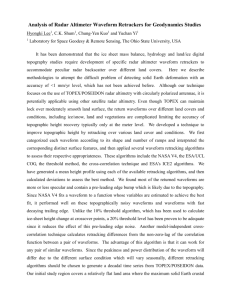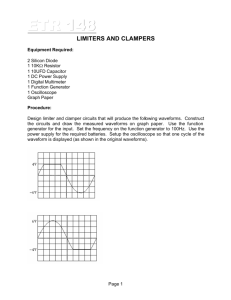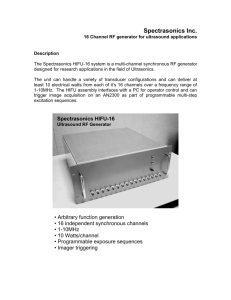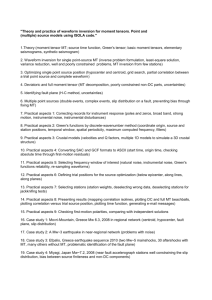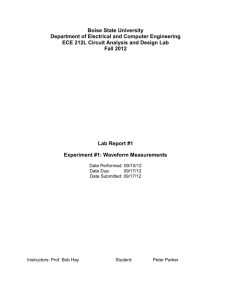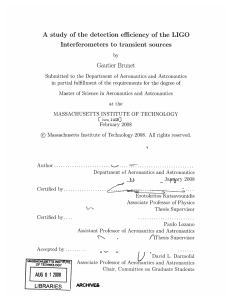? Testing GR with Time Domain Waveforms Cédric Huwyler, University of Zurich
advertisement
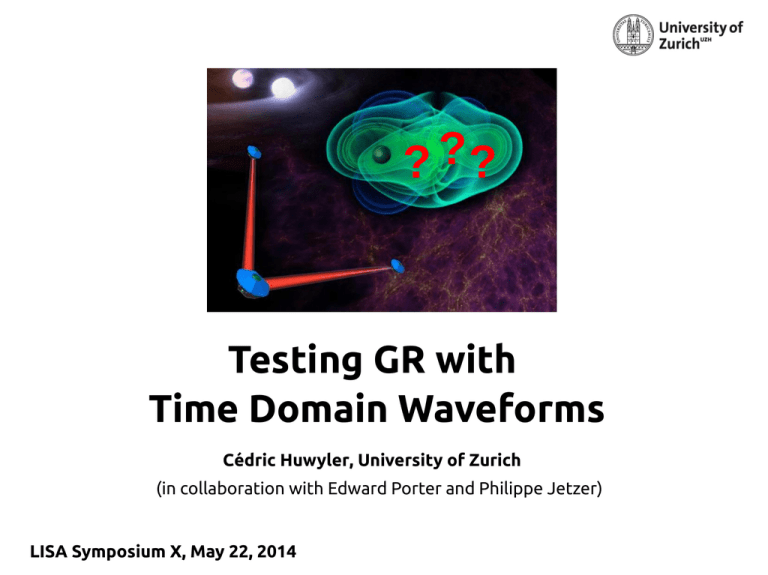
? ? ? Testing GR with Time Domain Waveforms Cédric Huwyler, University of Zurich (in collaboration with Edward Porter and Philippe Jetzer) LISA Symposium X, May 22, 2014 Outline / Motivation ➔ Gravitational waves from compact binary inspirals provide strong tests of GR (black hole binaries: v/c ~ 0.3) ➔ Want to check GR: if wrong, then all our parameter estimation is wrong ➔ Among possible ➔ A lot ways to test GR: test PN coefficients of work in this has already been done in context of aLIGO and classic LISA by Nico, Frans, Neil, .. : parametrized post-Einsteinian (ppE) scheme frequency domain waveform with generically perturbed PN coefficients ➔ Wanted to use a modified time domain waveform to this end PN Expansion ➔ Aim: Luc TD waveform FFT FD waveform (..|..) Data Analysis investigate effect of possible L3 mission configurations on our ability to test GR (focus on arm length, number of links) Gravitational-wave tests of GR ➔ Gravitational wave tests of GR with compact binary inspiral signals modified theory Gravitational-wave tests of GR ➔ Gravitational wave tests of GR with compact binary inspiral signals modified theory Check waveform only for certain direct test theory modified gravitational wave evolution Gravitational-wave tests of GR ➔ Gravitational wave tests of GR with compact binary inspiral signals modified theory generic test Check data for any possible deviation from GR, manifesting in GWs No one-to-one mapping modified gravitational wave evolution e.g. ppE scheme by Nico Yunes+ between modified waveform and particular theories Gravitational-wave tests of GR ➔ Gravitational wave tests of GR with compact binary inspiral signals modified theory generic test Check data for any possible deviation from GR, manifesting in GWs No one-to-one mapping modified gravitational wave evolution e.g. ppE scheme by Nico Yunes+ ➔ between modified waveform and particular theories Works in frequency domain, motivated with the SPA of the Fourier integral Time domain is closer to theory, what about a time domain GR testing framework? Waveform models Time Domain (quasi-circular, non-spinning compact binary inspiral) Waveform models Time Domain (quasi-circular, non-spinning compact binary inspiral) Stationary Phase Approximation (at dominant harmonic) Modified waveforms Frequency domain (ppE scheme) Sampson, Yunes, Cornish 2013: Leading order correction enough to detect departures from GR: Modified waveforms Frequency domain (ppE scheme) Sampson, Yunes, Cornish 2013: Leading order correction enough to detect departures from GR: Time Domain (proposal) (no amplitude correction) ( i = 0, 1/2, 1, 3/2, 2 ) up to 2PN order Where to go with this? ➔ Explore the accuracy with which a LISA-like detector can measure the theory parameters αi with MCMC (in preparation) Where to go with this? ➔ Explore the accuracy with which a LISA-like detector can measure the theory parameters αi with MCMC (in preparation) ➔ A lot of theory work in context of ppE scheme has been done by Nico, Neil, .. Is there a way to relate modified time domain waveforms to the ppE framework? could also be sum of multiple corrections αi(b, β) = ? Relating modified waveforms (SPA) Relating modified waveforms (SPA) Relating modified waveforms (SPA) =0 Truncate at 2PN, work in linear order of αi and β Relating modified waveforms (SPA) =0 Truncate at 2PN, work in linear order of αi and β Regime of validity I ➔ Used linear approximation to derive αi(b, β) ➔ In order for the framework to stay a perturbation of GR, require ➔ For αi(b, β) this gives different 'upper limits' on β, depending on b Is this a problem for the linear approximation? Regime of validity II Is this a problem for the linear approximation? ➔ Evaluate the residual ➔ Compute the ratio ➔ Looks alright! Summary ➔ Modified time domain waveforms are more natural to use than modified 'frequency domain' waveforms (SPA). ➔ Modified time domain waveforms can be related with modified frequency domain waveforms (ppE) by employing the SPA in good approximation. ➔ Will add 5 theory parameters: 9+5 = 14 dimensional parameter space for non-spinning binaries ➔ Stay tuned for parameter estimation simulations!
